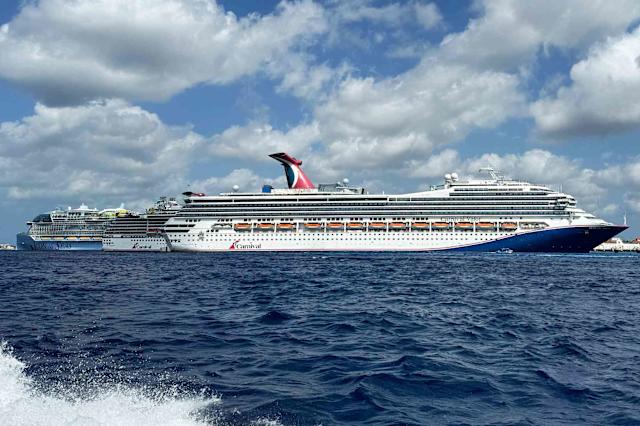Norovirus Outbreaks Surge on Cruise Ships—Here’s How the CDC Says Passengers Should Protect Themselves
In early 2025, cruise ships have seen a significant uptick in norovirus outbreaks, with the Centers for Disease Control and Prevention (CDC) reporting a marked increase compared to previous years. Often called the “cruise ship virus,” norovirus is highly contagious and causes gastrointestinal illness, including vomiting, diarrhea, and stomach cramps. While not usually serious for healthy adults, it can pose serious risks to young children, the elderly, and those with compromised immune systems.
The Scope of the Surge

As of May 2025, the CDC has recorded over 15 confirmed outbreaks of norovirus on cruise ships sailing in U.S. waters—nearly double the average from recent years. Cruise lines including Royal Caribbean, Carnival, and Norwegian have reported cases affecting hundreds of passengers and crew. One notable outbreak aboard a Caribbean-bound cruise resulted in over 250 confirmed cases, forcing the ship to dock early and undergo a deep cleaning before resuming service.
While norovirus can occur in any crowded setting, cruise ships are particularly vulnerable due to close quarters, shared dining spaces, and limited fresh air circulation. The virus spreads quickly from person to person, through contaminated food, water, surfaces, or direct contact with an infected individual.

Why the Increase Now?
Experts suggest several factors for the increase. As cruise travel has rebounded post-COVID, passenger numbers are back to near pre-pandemic levels, increasing opportunities for viral transmission. Additionally, seasonal trends show norovirus thrives in colder months, particularly from November through April. Finally, better reporting mechanisms and more proactive testing may also be identifying more cases than in past years.
Dr. Lisa Warren, an epidemiologist with the CDC’s Vessel Sanitation Program, noted: “Cruise ships are doing a much better job of reporting potential cases early, which helps us track outbreaks more accurately. But that also means the numbers might look higher simply because we’re catching more of them.”
Symptoms and Transmission
Norovirus symptoms typically appear 12 to 48 hours after exposure and include:
Sudden onset vomiting
Watery diarrhea
Abdominal cramps
Low-grade fever
Fatigue and muscle aches
The illness usually resolves within 1–3 days, but infected individuals remain contagious for at least 48 hours after symptoms subside. The virus is extremely hardy, surviving on surfaces for days and resistant to many standard disinfectants.

How the CDC Recommends Passengers Protect Themselves
The CDC offers a series of practical steps for cruise passengers to reduce their risk of contracting norovirus:
1. Wash Hands Frequently: Handwashing with soap and water is the most effective way to prevent infection. Hand sanitizer is not as effective against norovirus, so use it only as a supplement when soap and water are unavailable.
2. Avoid Self-Serve Buffets: Opt for meals that are served by crew rather than self-service stations, which can become contaminated by sick passengers.
3. Report Symptoms Early: If you begin to feel ill, notify the ship’s medical staff immediately. Early detection helps reduce the spread to others and allows for quicker medical attention.
4. Disinfect Personal Spaces: Wipe down high-touch surfaces in your cabin, such as door handles, light switches, and remote controls, using disinfectant wipes approved to kill norovirus.
5. Don’t Travel Sick: If you’re feeling unwell before departure, consider postponing your trip. Most cruise lines now offer flexible rescheduling policies in light of public health concerns.
6. Practice Food Safety: Only consume food that has been cooked thoroughly and served hot. Be cautious with raw fruits and vegetables, and drink only bottled or treated water if in port.
Cruise Line Responsibilities
In response to the CDC’s alerts, many cruise operators have increased onboard sanitation protocols, limited self-service options, and are conducting daily health checks among crew. Some have introduced pre-boarding health screenings, and ships are being sanitized more thoroughly between sailings.
The CDC’s Vessel Sanitation Program (VSP) continues to monitor ships that dock at U.S. ports. If a vessel reports more than 3% of passengers with gastrointestinal illness, it is subject to further inspection and possible intervention.
Conclusion
While the rise in norovirus outbreaks on cruise ships is concerning, it’s not a reason to cancel your trip—provided you take proper precautions. Vigilance, good hygiene, and prompt reporting are key to reducing your risk. Passengers and cruise lines must work together to ensure health and safety remain a top priority as the industry continues to recover and grow.













